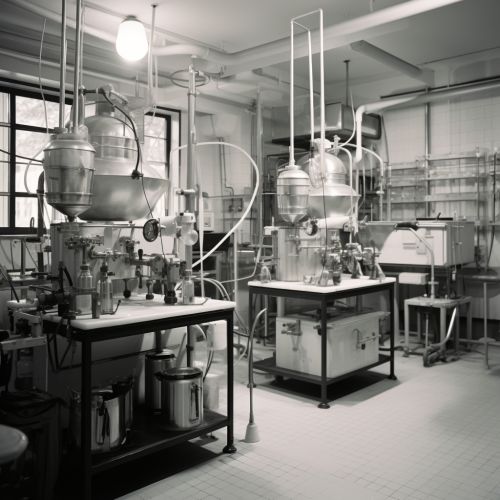Rapamycin
Overview
Rapamycin, also known as Sirolimus, is a macrolide compound that has immunosuppressant functions in humans and is used in medicine for organ transplantation, especially kidney transplantsOrgan Transplantation. It was first discovered in the soil of Easter Island, Chile, in 1972 by a team of Canadian and American researchers. The compound is named after the native name of the island, Rapa Nui.
Discovery and Production
The discovery of Rapamycin dates back to the early 1970s when a team of researchers from Canada and the United States collected soil samples from Easter Island during a scientific expedition. The samples were found to contain a strain of bacteria, Streptomyces hygroscopicus, which produced a potent antifungal compound. This compound was later named Rapamycin after the native name of the island, Rapa Nui.
The production of Rapamycin involves a complex process of fermentation using the Streptomyces hygroscopicus bacteria. The bacteria are grown in a nutrient-rich medium, where they produce the Rapamycin compound as a secondary metabolite. The compound is then extracted and purified for medical use.


Medical Uses
Rapamycin has a wide range of medical applications, primarily due to its immunosuppressive and antiproliferative properties. It is most commonly used in organ transplantation to prevent organ rejection. By suppressing the immune response, Rapamycin allows the transplanted organ to be accepted by the recipient's body.
In addition to organ transplantation, Rapamycin is also used in the treatment of certain types of cancer. Its antiproliferative properties make it effective in inhibiting the growth of cancer cells. It is also used in the treatment of a rare lung disease called lymphangioleiomyomatosis (LAM).
Mechanism of Action
Rapamycin works by inhibiting a protein called mammalian target of rapamycin (mTOR). mTOR plays a crucial role in cell growth, proliferation, and survival. By inhibiting mTOR, Rapamycin effectively suppresses the immune response and inhibits cell proliferation.
Side Effects and Risks
Like all medications, Rapamycin has potential side effects and risks. Common side effects include mouth sores, diarrhea, nausea, and fatigue. More serious side effects can include lung damage, kidney damage, and an increased risk of infection due to the suppression of the immune system.
Research
Rapamycin is the subject of ongoing research in various fields of medicine. Its potential applications in treating diseases such as Alzheimer's disease, Parkinson's disease, and Huntington's disease are currently being explored. There is also research being conducted into its potential use in life extension and anti-aging therapies.
